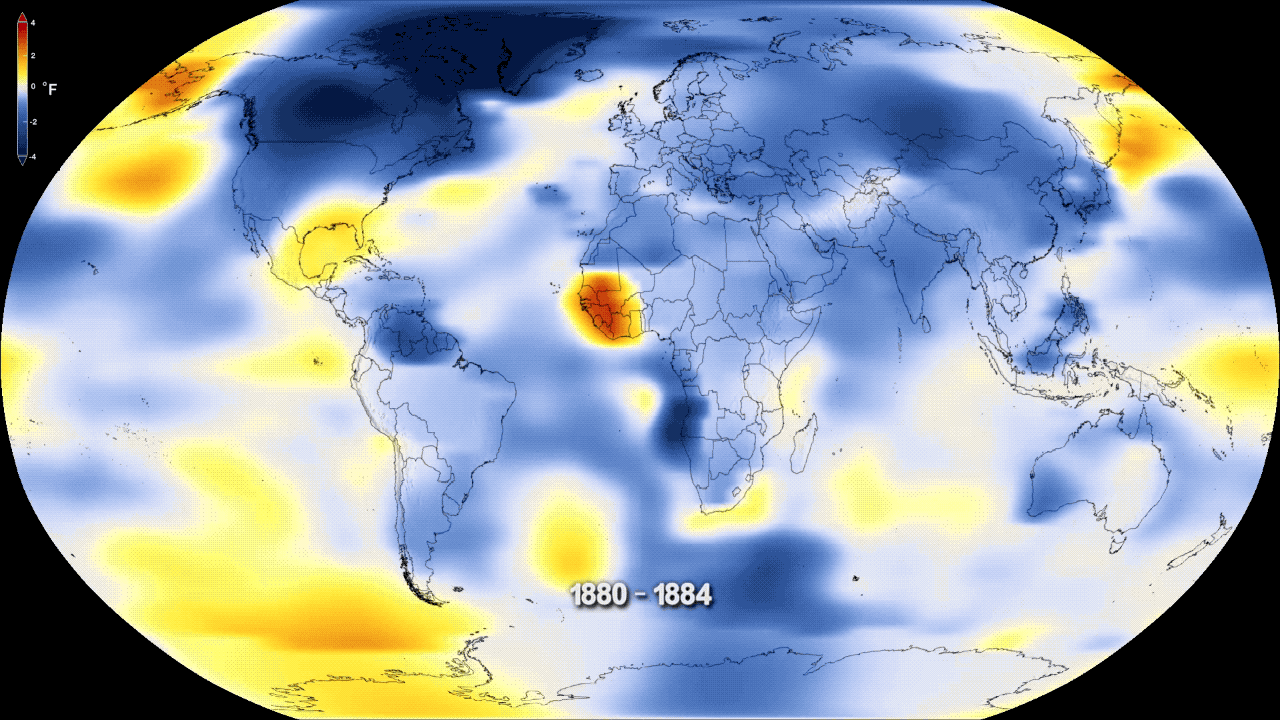Overview
Energy crises and global warming severely limit the ability of human civilization to develop along a sustainable path. Increasing renewable energy sources and decreasing energy consumption are fundamental steps to achieve sustainability. Our research has contributed to the sustainable energy future via three fundamental approaches: (1) renewable energy harvesting from the ambient environment; (2) energy saving via improving energy efficiency; (3) developing green and sustainable alternatives to conventional fossil fuels.


Earth Surface Temperature over Years
Sustainability Energy Strategies
1. Renewable Electricity Generation
Mechanical motion ubiquitously exists in the ambient environment and people’s daily life. It is an attractive target for energy harvesting as a promising supplement to traditional fuel sources. During my 4 years' Ph.D. study with Prof. Zhong Lin Wang at Georgia Tech, I carried out pioneering research on the development of a triboelectric nanogenerator (TENG), a fundamentally new energy technology invented in 2012, for both energy harvesting and self-powered sensing. Based on the coupling of triboelectrification and electrostatic induction between commonly-used and economically available materials, such as polymers, TENG, as an emerging power solution, exhibits a collection of compelling features, such as being simple, reliable, cost-effective as well as high efficiency. Ever since its first report, its output area power density has reached 500 W/m², and instantaneous conversion efficiency of ∼70% and a total energy conversion efficiency of up to 85% have been demonstrated.
I established its working mechanism of lateral-sliding mode, developed the first TENG for vibrational energy harvesting, and systematically built up the new field via a series of works. I developed the first TENG for acoustic energy harvesting and designed the radial-arrayed rotary TENG, which presented the highest TENG output performance(Highlighted by Nature 2014, 507,143). I developed the first configuration of the TENG network structure for large scale blue energy harvesting(Highlighted by Nature 2017, 542,159). I also developed the grass TENG configuration for large scale wind energy harvesting. I also resolved the common materials abrasion problem in TENG by advanced device designs.

Recent first/corresponding-author publications:
1) Ph.D. Dissertation. 2016, Triboelectric Nanogenerators, Georgia Tech.
2) ACS Nano 2016, 10, 7874.
3) Energy Environ. Sci. 2015, 8, 2250.
4) ACS Nano 2015, 9, 3324.
5) ACS Nano 2015, 9, 12334.
6) ACS Nano 2015, 9, 5577.
7) ACS Nano 2014, 8, 2649.
8) Nat. Commun. 2014, 5, 3426.
9) Adv. Funct. Mater. 2014, 24, 4090.
10) Adv. Energy Mater. 2014, 4, 1301322.
11) Nano Lett. 2013, 13, 2282.
12) Adv. Mater. 2013, 25, 6094.
13) ACS Nano 2013, 7, 11317.
14) Nano Res. 2013, 6, 880.
2. Improving Energy Efficiency

Increasing renewable energy sources and decreasing energy consumption are fundamental steps to achieve sustainability. Endothermy plays a pivotal role in performing the proper function of the human body. To maintain human thermal comfort, heating and cooling systems consume 15% of electricity generated globally. Personal thermal management emphasizes only heating or cooling the human body rather than the whole space, which is thus much more energy-efficient. With Prof. Yi Cui at Stanford, I developed a nanophotonic structure textile with tailored infrared properties for passive radiative cooling using nanoporous polyethylene fabric. This fabric lowered human skin temperature by 2.3 °C, which corresponds to more than 20% saving on indoor cooling energy (Highlighted by Science 2018, 360, 616). Furthermore, I also developed a nanocomposite textile with a metallic layer, which could keep the body warm and enable 8 °C decrease of indoor set-point, corresponding to save more than 35% of building heat energy. With large-scale production, we expect that both the two thermal textiles will achieve breakthroughs in reducing energy consumption for global sustainability.
Recent first/corresponding-author publications:
1) Nat. Sustain. 2018, 1, 105.
3. Developping clean energy sources
Nowadays, with the threat of climate change and energy crises, the increasing demand for clean and sustainable energy sources has become a strong driving force in continuing economic development. Exploring high-efficient, durable, yet cost-effective catalysts remains highly desired and a challenge.Traditional active noble metal catalysis, by using Pt and Pd, for example, is rapidly developing recently owning to its dominant 4e-ORR process and excellent ORR performance. However, its further development might be shadowed by high cost, poor long-term durability, and weak tolerance against chemical corrosion such as methanol poisoning. To address the problem, we developed a generalized and facile approach to prepare the hierarchical structure of N-doped carbon-shell-protected CeO2/Co (CeO2–Co–NC) hollow spheres with greatly improved oxygen reduction performance. Compared to the commercial Pt/C catalyst, CeO2–Co–NC exhibits high ORR catalytic activity with a high onset potential of 922 mV (vs RHE), a positive half-wave potential of 797 mV (vs RHE), a diffusion-limited current density of 5.37 mA cm–2, a small Tafel slope of 60 mV dec–1, and a decent durability (the half-wave potential exhibits a negative shift of only 7 mV after 2000 cycles).

Recent first/corresponding-author publications:
1) ACS Nano 2018, 12, 3042.
